Pūrākau : PŪWHENUA
| The chief Rongokako and his son Tamatea Arikinui lived with their people in a place called Kitirititi, far across the great Pacific ocean. One day, Rongokako and Tamatea Arikinui decided to build a waka to travel from their home across Te Moana Nui a Kiwa to Kohurangi in Aotearoa – the land that Kupe discovered. Rongokako called his people together and instructed them that they should search for a log to build a waka to make the long journey. After searching for a time, however, the people were unable to find anything suitable. Meanwhile, a man called Waitaha had heard that Rongokako and his son Tamatea Arikinui were about to build a waka; he asked that the two go to visit him at their leisure. There was a man called Hei. He had a son called Waitaha. He had a son called Ruarangi. He was wed to Te Moana-i- Kauia. Together they had two daughters, Ihuparapara and Iwipupu. Upon the arrival of Tamatea Arikinui to Waitaha’s village, Waitaha uttered that Tamatea Arikinui should go to a place called Pūwhenua; for there he would find the log to be used to build a waka to convey their iwi to Aotearoa. Waitaha’s reason for offering this log was that it was to be a gift to his grandchildren, Ihuparapara and Iwipupu who later became the wives of Tamatea Arikinui. The log called Pūwhenua was finally fetched. The tree was dug out from the roots so that it would not break, and then the log was cut from the bottom to the top. The names of the priests who felled the tree Pūwhenua and who built the waka were: Ko Ruawharo = Huiterangiora Ko Tupai = Wharaurangi Ko Taikehu =Tenakura-Kautawhaki Ko Pawa = Te Kaukau Ko Kahupara = Matangireia Upon the completion of the waka, it was named Tākitimu; the waka was then towed to a place called Pikopiko-i-whiti. As the crew neared their arrival, the tohunga Ruawharo and Tupai were invited to begin the sacred rites to halt the storms and all forms of ill-weather so that the bow of the waka could turn toward the open sea and begin the journey to Aotearoa. . The time came to prepare to board. The crew placed the mast, the floor grating, and oars into the waka; the sides were attached, and the bow put firmly in place. Here are the names of the sacred oars that rowed Tākitimu: Ko Rapanga-i-te-ata-Rangi Ko Rapanga-i-te-ata-Nuku Ko Manini-Kura Ko Manini-Aro Ko Tangi-te-Wiwini Ko Tangi-te-Wawana Before the crew rowed inward they called the Gods to assemble: Kahukura, Hinekorako, Hinehuruhuru, Tamaiwaho, Tunui-te-Ika, Rongomai and Ruamano; then the men, women, and children boarded the waka. The sacred axes of Tamatea Arikinui were called Awhiorangi and Whironui. With these sacred implements, Tamatea Arikinui sliced the waves of the great Pacific Ocean. The waka Tākitimu traversed the great waters before landing in Kaitaia for a time; the crew then continued on to Tauranga. Upon their arrival, Tamatea Arikinui and his people ascended Maunganui. Tamatea Arikinui looked in the direction of Ōropi, towards the Hautere forest, and gave the name Pūwhenua to the maunga that fell into his sight. This name was given in remembrance of Waitaha in Hawaiki. The pronouncement gave honour and was of deep significance for Waitaha; for it was he who named Pūwhenua – the log from which the great waka Tāktimu was built. |
Waiata
Click here
Waiata – Tākitimu
Kiriata
Click here
Kiriata – Pūwhenua te maunga
Kiriata – PŪWHENUA TE RĀKAU II PŪWHENUA TE MAUNGA
Other resources :
Nuku Reo :
Click here
